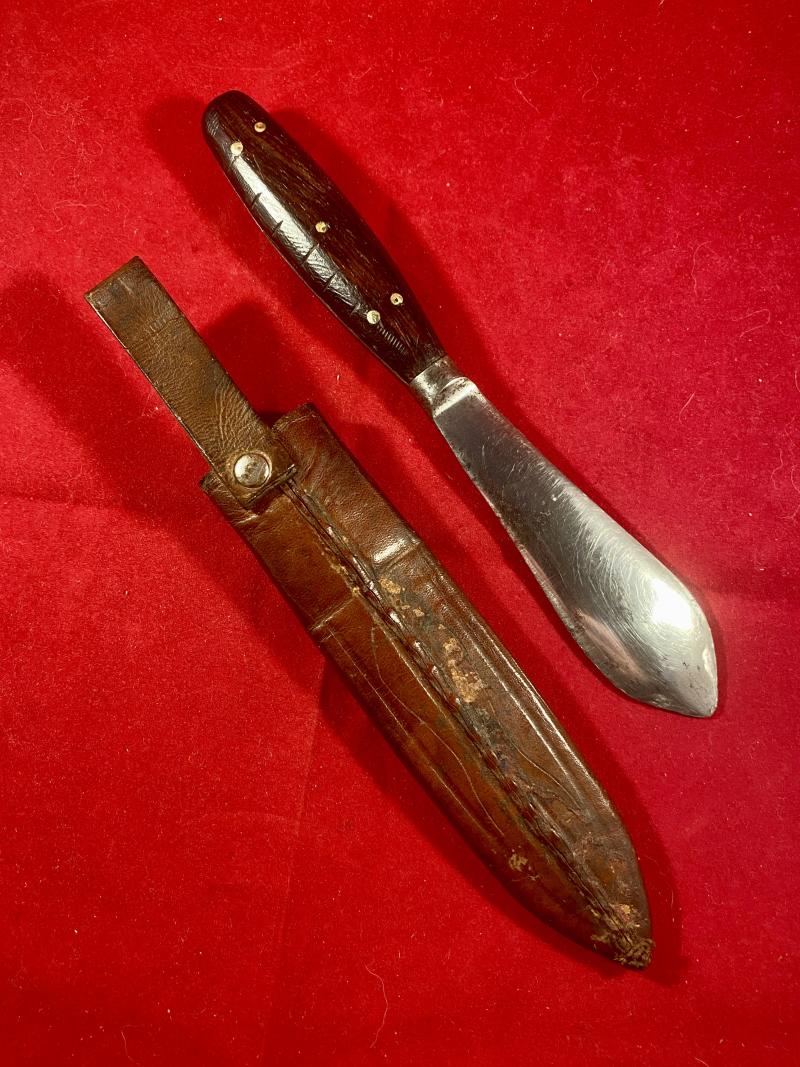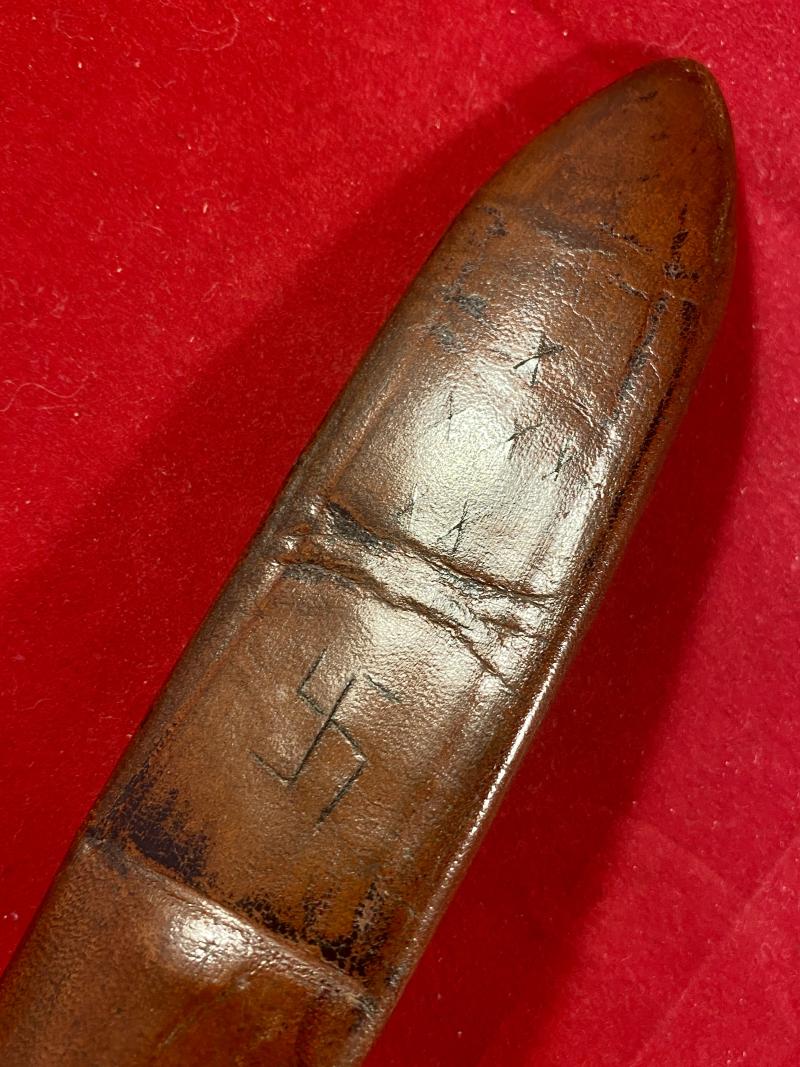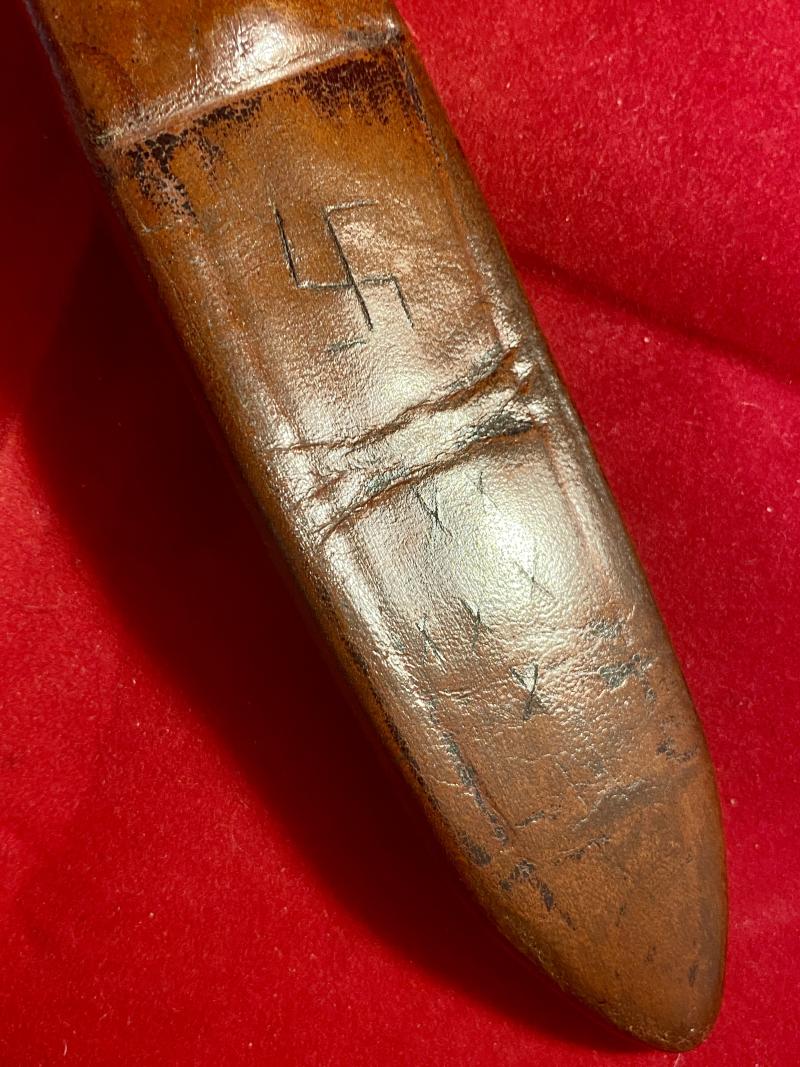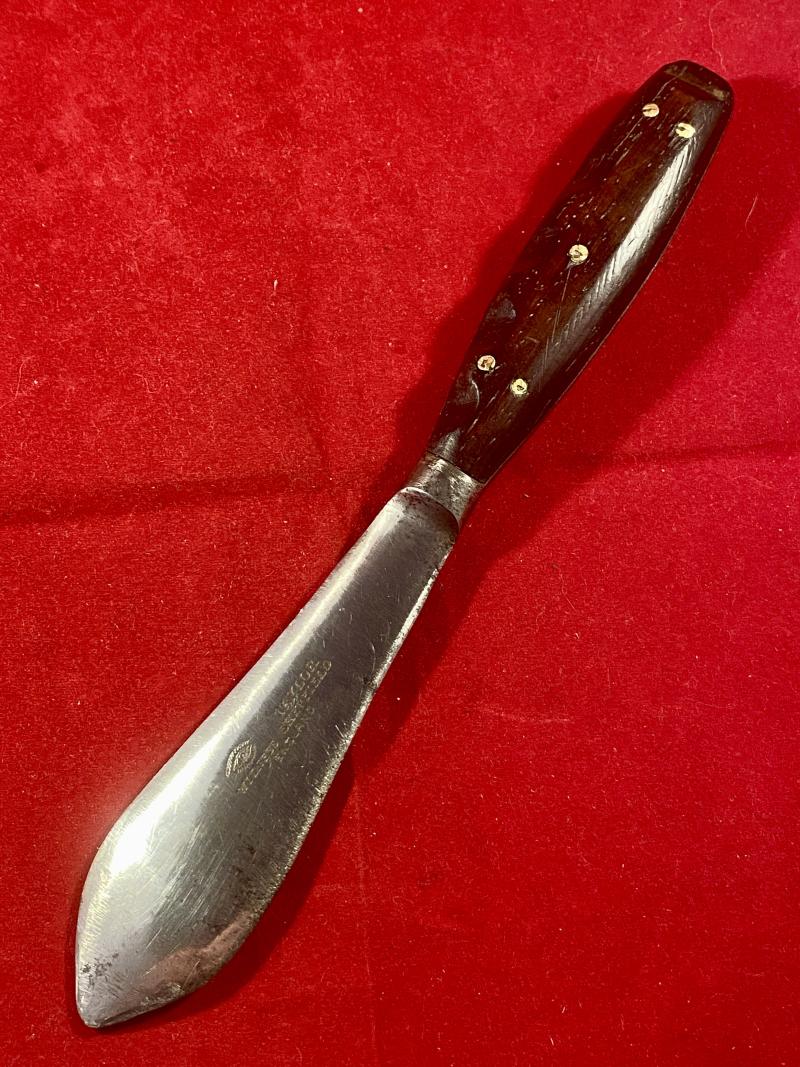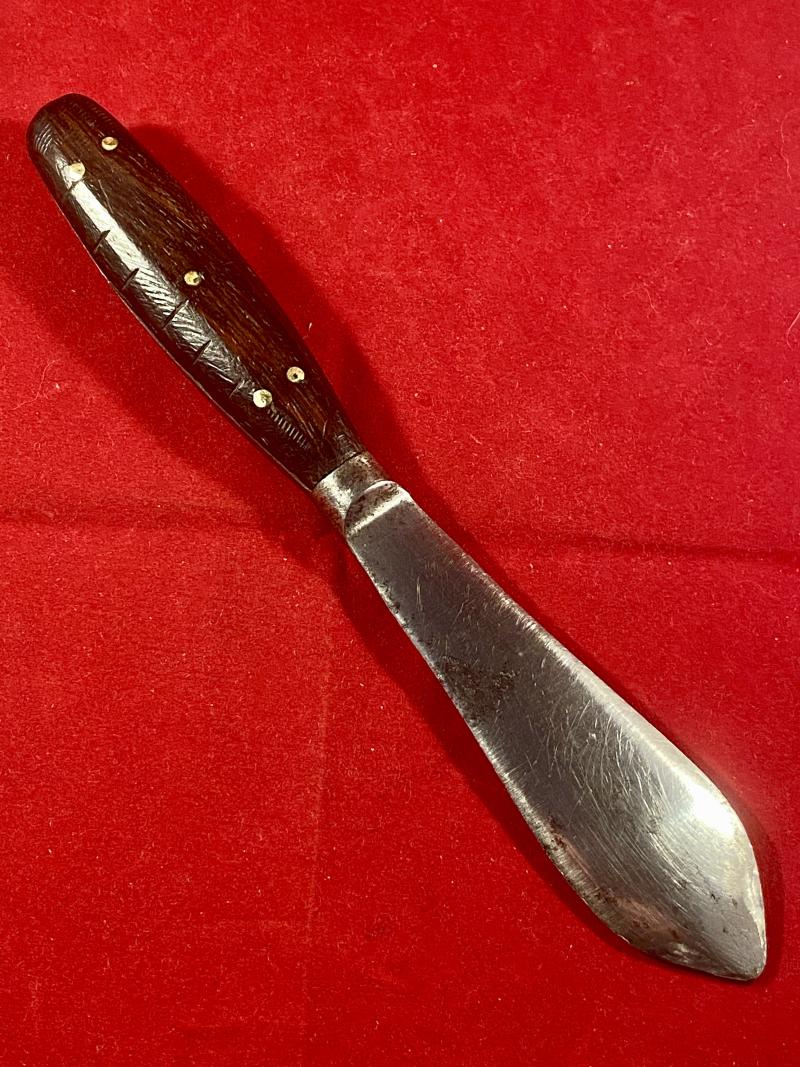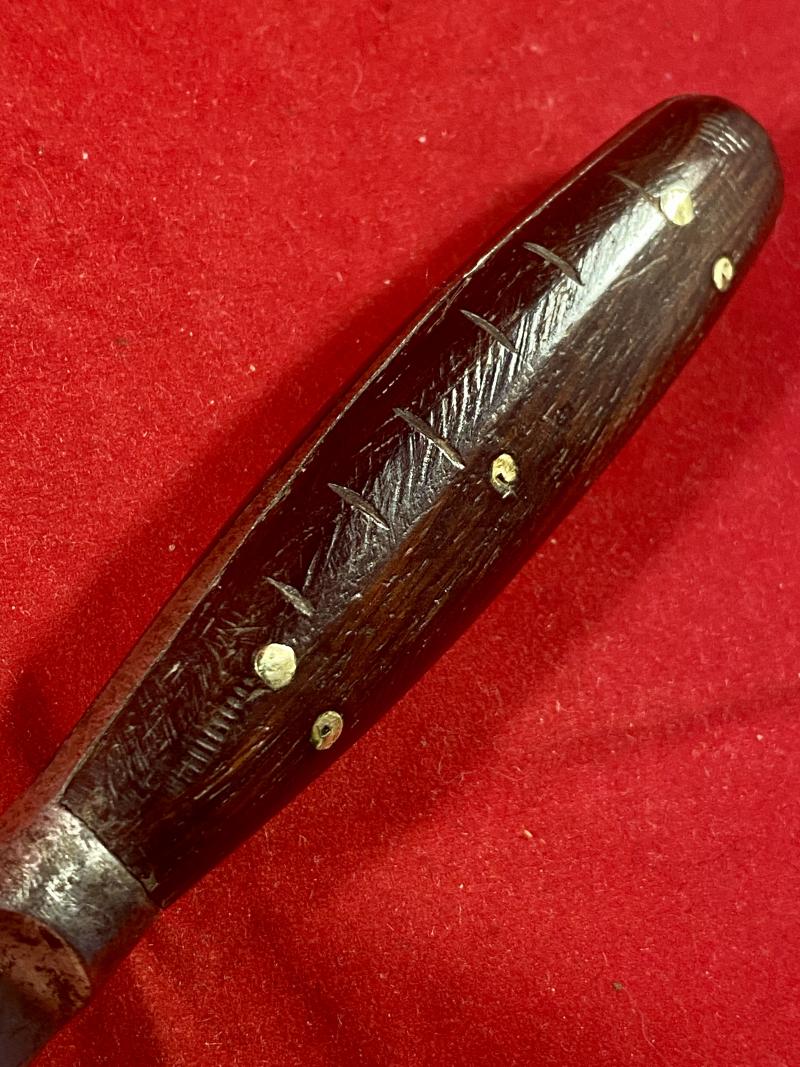Unusual Throwing Knife and Scabbard by Taylor “Eye” Witness Sheffield Possibly Used During WW2
Here on offer is an unusual and early throwing knife and scabbard by Taylor Witness of Sheffield England.
The story that came with this knife, without any provenance I might add, was that it was used by a British commando whilst undertaking close combat missions against German’s during WW2?
Obviously, this can just be a made-up story, but the what is interesting is the fact the scabbard has a Swastika carved into it along with six small “X’s” and the grip has six notches/lines carved along the edge.
I have seen this type of “kill mark” before, on such knives as Gurkha kukris and some smaller WW2 bayonets.
Now the knife itself is unusual, in that I can’t find another such example or indeed any reference information about it?
From its construction, it looks to me to be a very early example of a throwing knife, probably from the mid to late Victorian period?
It has been made by the legendary Sheffield blade maker, John Taylor, who in 1820 founded a small pocketknife & edge tools workshop in the very heart of Sheffield, the ancestral home of cutlery in Great Britain. As was normal back then, makers would seek the use of a symbol by which their products would be recognised, even by those unable to read. In 1838 Taylor was granted the "Eye Witness" trademark for his goods, accompanied by an illustration of an all-seeing eye, hence the Eye Witness name that exists to this day.
The throwing knife has a pointed double-edged fine steel blade that has a flattened dome shaped and bulbous tip, making for a well-balanced and weighty throwing knife. There are some sharpening marks around the tip and some age greying to the finish.
I have actually thrown this knife against a tree in the past, it was easy to throw accurately and I was amazed as to the depth it penetrated the tree!
If this was indeed used as a form of SOE weapon during WW2, it would have been a very effective as a throwing knife and equally with its sharp double-edged blade, a great in close combat situations.
The blade itself is 4” long and clearly stamped with the maker’s name and early version of the “Eye” logo, without any lettering.
TAYLOR
WITNESS SHEFFIELD
ENGLAND
The blade and tang are made from one piece of steel and the tang runs the full length of the grip.
The wooden grip is made from two sections of what look like oak, that are held in place by five brass rivets.
One edge has four finger grooves carved into it and the other side has the six “kill marks” as discussed above.
The scabbard is made from brown leather and is stitched together on the reverse. It has a belt loop that is riveted to the scabbard lip.
The front has the Swastika and “kill marks” as discussed above and it also has some age scuffs and creases to the finish.
.
The blade measures 4” (10.3cm) long and the whole knife is 7.9” (20cm). The flattened section of the blade is 1.2” (3cm) wide.
It weighs 133g.
Please see my pictures for the details of the condition, which complement this description.
Please see my TERMS OF BUSINESS regarding Deliver Charges and Insurance regarding additional insurance cover, should you require it, BEFORE the item is dispatched.
The responsibility lies with the customer to check with your Customs restrictions that this item can be imported into your country.
Code: 51539


